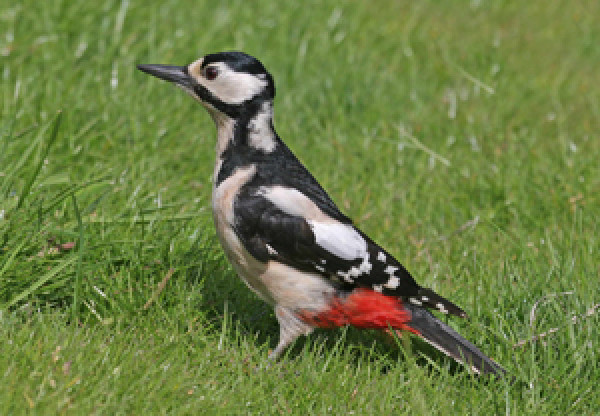Great Spotted Woodpecker

Dendrocopos major
There are just two black and white woodpeckers to be found in Britain, so identification is relatively straightforward. One of the main characteristics is the red underneath the tail. This is not found on the Lesser Spotted Woodpecker. As the names would suggest, the Lesser Spotted Woodpecker is a small bird, about the size of a Greenfinch, while the Great Spotted Woodpecker is about the size of a Starling.
identification guide to woodpeckers.
There are probably some 25,000 to 30,000 pairs of these striking birds breeding in Britain. They do need woodland, but that does not mean they will not visit isolated groups of trees or even single ones if they have nice dead wood on them with lots of grubs to eat. A few pairs now breed in Ireland, making them a recent colonist.
Hitting a solid tree with your beak so hard that splinters fly ought to cause the brain to rotate in the way that causes concussion in humans. Not a bit of it. The evolution of the bird’s drilling equipment has provided very sophisticated shock-absorbing adaptations involving the way that the bird’s beak joins the skull. The stresses are transmitted directly towards the centre of the brain and do not cause the knockout swirl.
When woodpeckers hammer into wood to get at grubs, they also have another anatomical adaptation designed to help them feed. The roots of their tongues are coiled around the back of their skulls and can be extended a prodigious distance to harpoon insect larvae in their tunnels. The Great Spotted Woodpecker’s tongue protrudes 40mm beyond the tip of the bill
Find out more about Great Spotted Woodpeckers on BirdFacts and the Wider Countryside Report.






Share this page